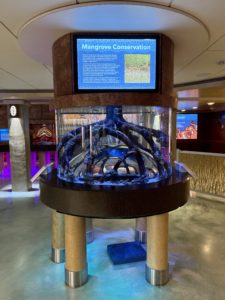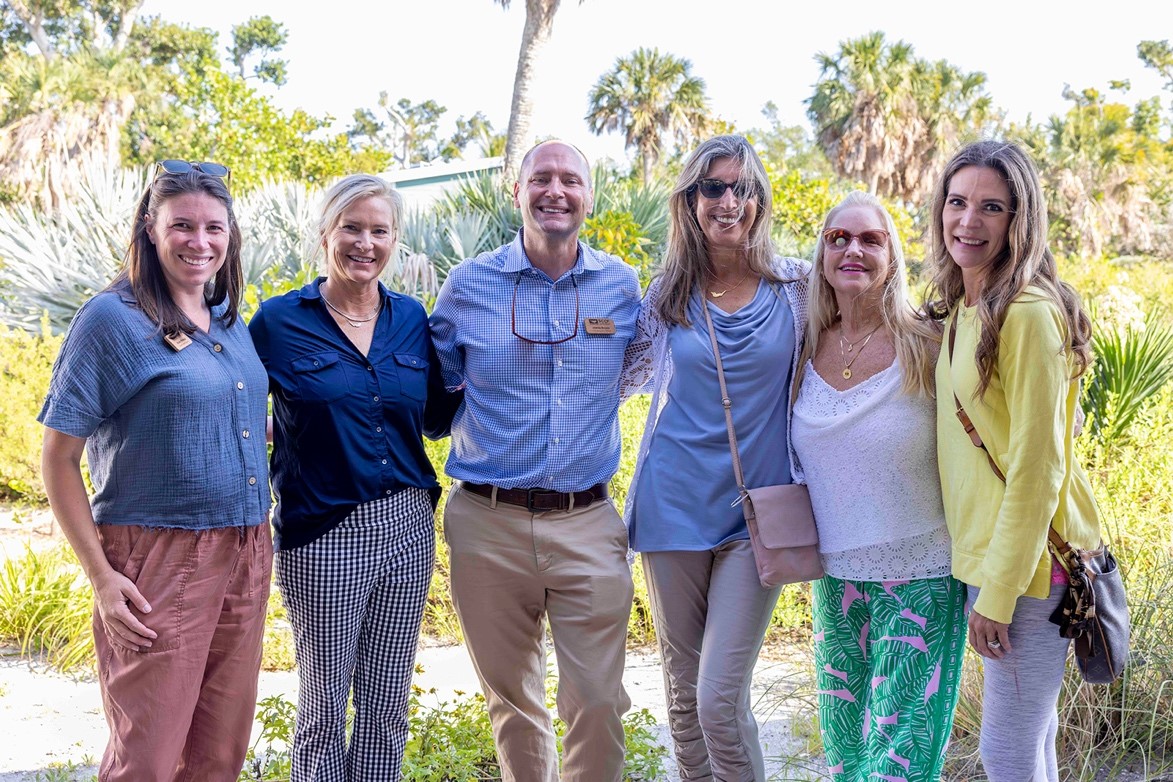 Earlier this month, the Bailey-Matthews National Shell Museum launched a new mangrove exhibit within its Beyond Shells Living Gallery of aquariums. The exhibit is designed to facilitate an educational narrative of mangrove conservation and water quality that will be meaningful for local, visiting, and school audiences.
Earlier this month, the Bailey-Matthews National Shell Museum launched a new mangrove exhibit within its Beyond Shells Living Gallery of aquariums. The exhibit is designed to facilitate an educational narrative of mangrove conservation and water quality that will be meaningful for local, visiting, and school audiences.
Mangroves are tropical coastal shrubs and trees that can tolerate wave action, immersion in sea water, and that thrive under a very broad range of salt concentrations. Different species of mangroves are adapted to prosper in sand or mud with very low oxygen conditions. This exhibit presents a red mangrove which is typically found at the outer fringe of mangrove forests.
“This dynamic new exhibit takes the viewer inside a beautifully re-created red mangrove ecosystem, offering a close view of the importance of mangroves to the health and conservation of our coastal environments,” said Sam Ankerson, Executive Director of the Bailey-Matthews National Shell Museum.
Mangroves provide shelter and habitat to a diverse community of invertebrates and fish. Mollusks thrive in these ecosystems, from the muddy bottom around the trees to the roots, branches, and trunk, and even under the mangrove tree’s bark.
The mangrove exhibit will include mollusks and fish that are typical to a red mangrove ecosystem, including Marsh Killifish, Sheepshead Killifish, Sailfin Mollies, Bruised Nassa snails, Crown Conch snails, Banded Tulips, and True Tulips. The mangrove will extend over a “viewing bubble”, which will enable children to view the robust diversity of animals while standing on the inside of the exhibit.
For more information on the Museum, please visit ShellMuseum.org.
About the Museum: The Bailey-Matthews National Shell Museum is a Natural History Museum, and the only accredited museum in the United States with a primary focus on shells and mollusks. Its mission is to use exceptional collections, aquariums, programs, experiences, and science to be the nation’s leading museum in the conservation, preservation, interpretation, and celebration of shells, the mollusks that create them, and their ecosystems. Permanent exhibitions on view include the Great Hall of Shells which displays highlights of the Museum’s collection of some 550,000 shells, as well as the Beyond Shells living gallery of aquariums and over 50 species of marine life. For more information on the Museum, please visit ShellMuseum.org or call (239) 395-2233.





